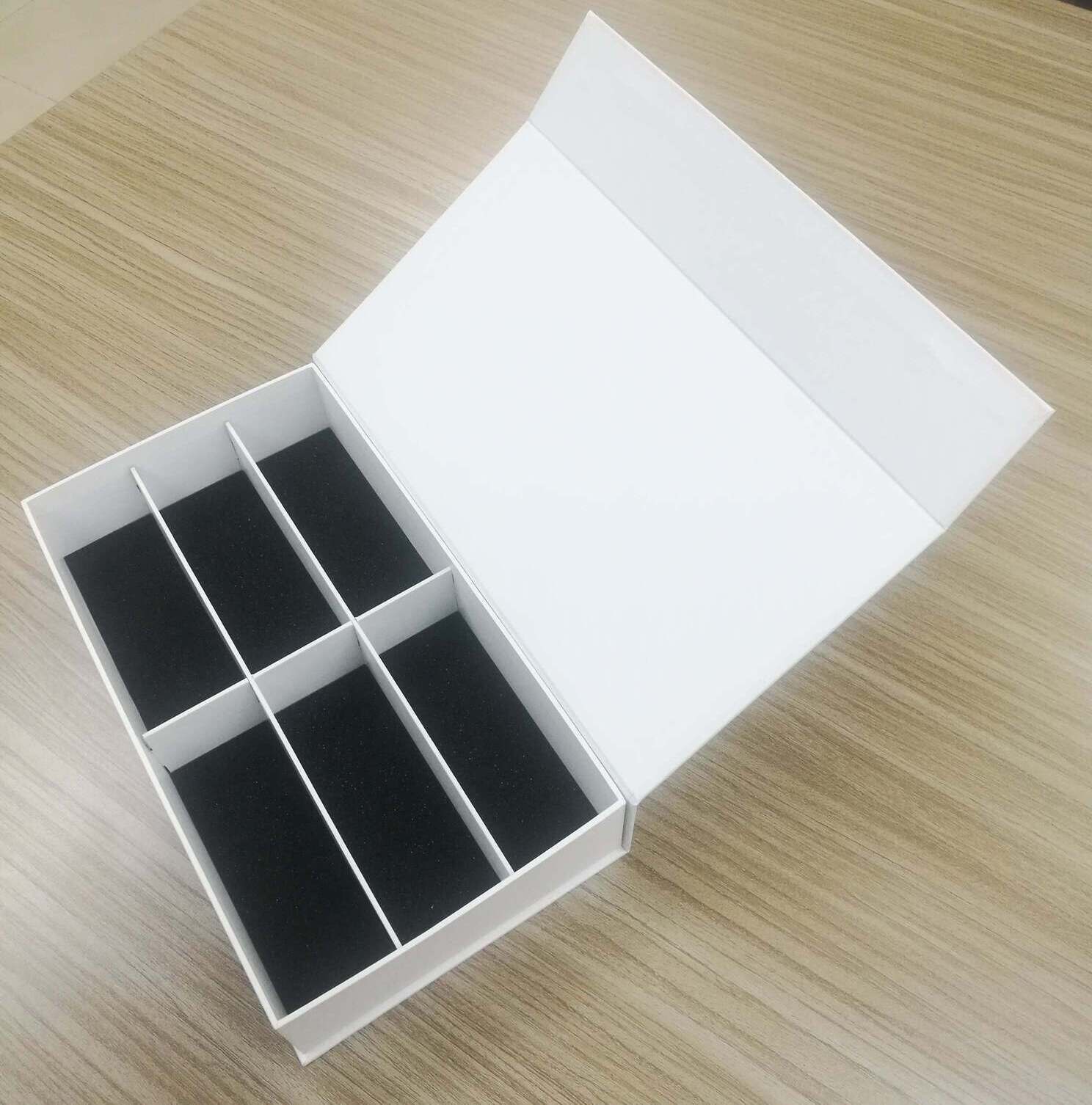When choosing the material for your box partitions, consider the weight and fragility of your products, as well as your budget and environmental concerns. Each type has its advantages and limitations, so select the one that best suits your packaging needs.
Box Partitions: Types, Pros, and Cons
When it comes to choosing box partitions or dividers, there is often a variety to select from. Different materials and types of partitions will offer varying levels of protection and durability but come with their own limitations. They are listed below from lowest to highest in cost.
1. Single Layered Paperboard
Single layered paperboard partitions are made from a single layer of paperboard (ranging from 300-400gsm in thickness).
Pros:
- Minimal materials mean that it is lightweight and eco-friendly.
Cons:
- Due to the single layered material, it is less durable and may more likely warp in structure.
- Offers limited protection for fragile items.
They are most suitable for extremely lightweight products that do not require much support.
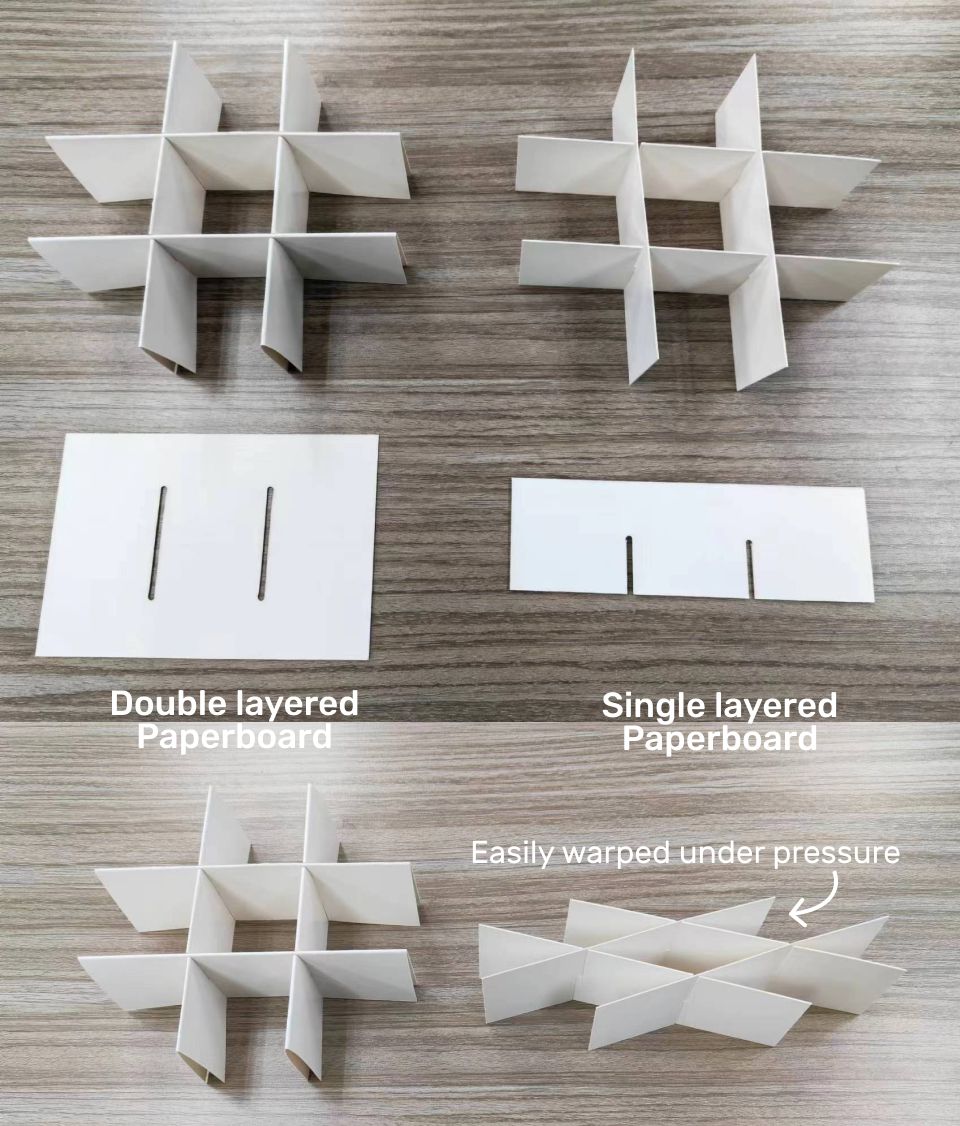
2. Double Layered Paperboard
Double layered paperboard partitions or dividers consist of a single sheet of paperboard that's folded back to back for added strength.
Pros:
- More durable than a single layered paperboard partition.
- Still relatively lightweight and eco-friendly.
Cons:
- Slightly thicker compared to single layered paperboard partitions.
- More material used and thus slightly higher cost.
They are best for those looking for an economical solution that will hold a bit more structure in supporting lightweight products.
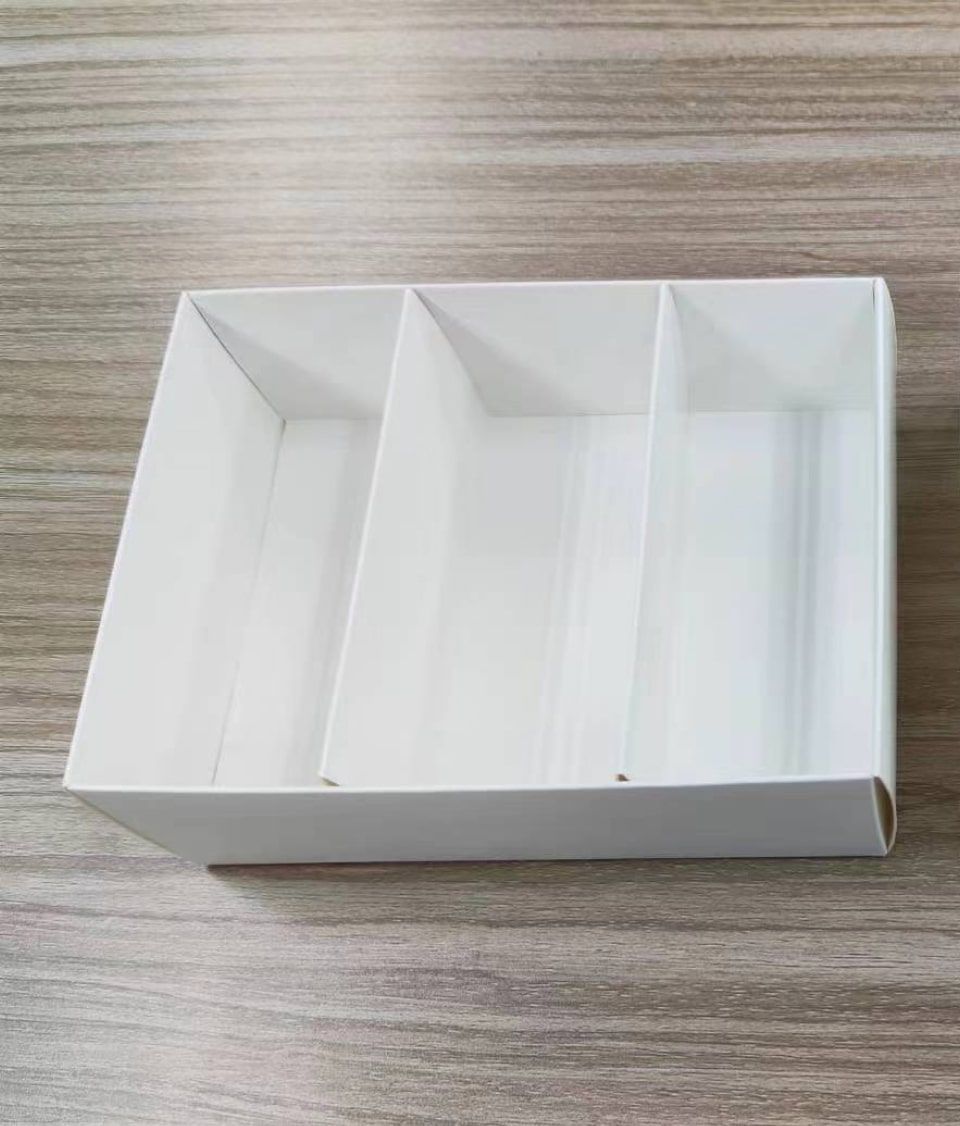
3. Single Layered Corrugated
Single layered corrugated partitions are partitions using fluted cardboard, also known as corrugation.
Pros:
- Lightweight yet sturdier than paperboard.
- Provides better cushioning and protection.
Cons:
- Exposed fluting may be less visually appealing.
- May not be suitable for extremely heavy items.
They are best for those looking for more cushioning for their products.
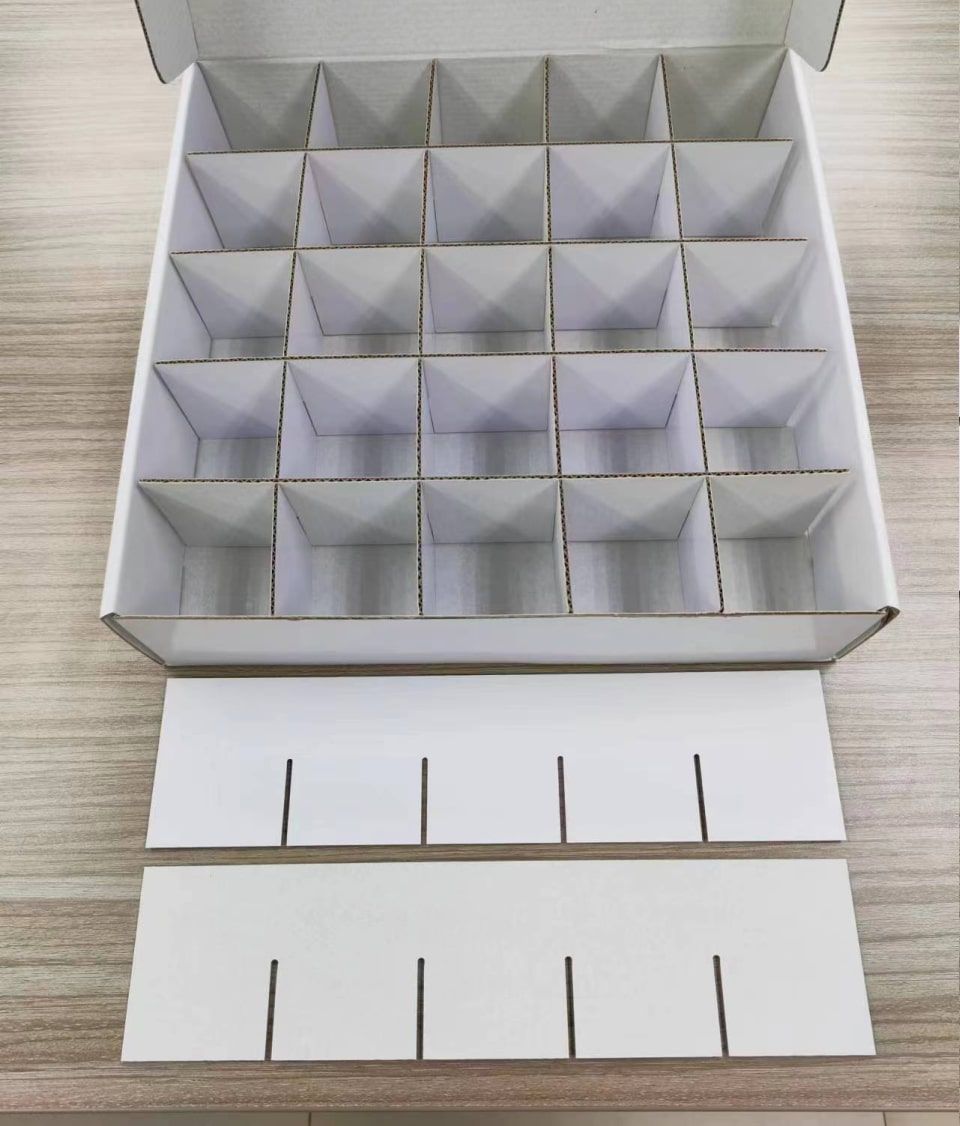
4. Double Layered Corrugated
Double layered corrugated partitions or dividers consist of a single sheet of fluted cardboard that's folded back to back for maximum strength.
Pros:
- Offers superior protection for heavy and fragile items.
- More resistant to crushing and impacts.
Cons:
- Takes up more storage space due to increased thickness and additional material.
- The bulkiest option for partitions.
They are best for those looking for a more robust partition option with more cushioning.
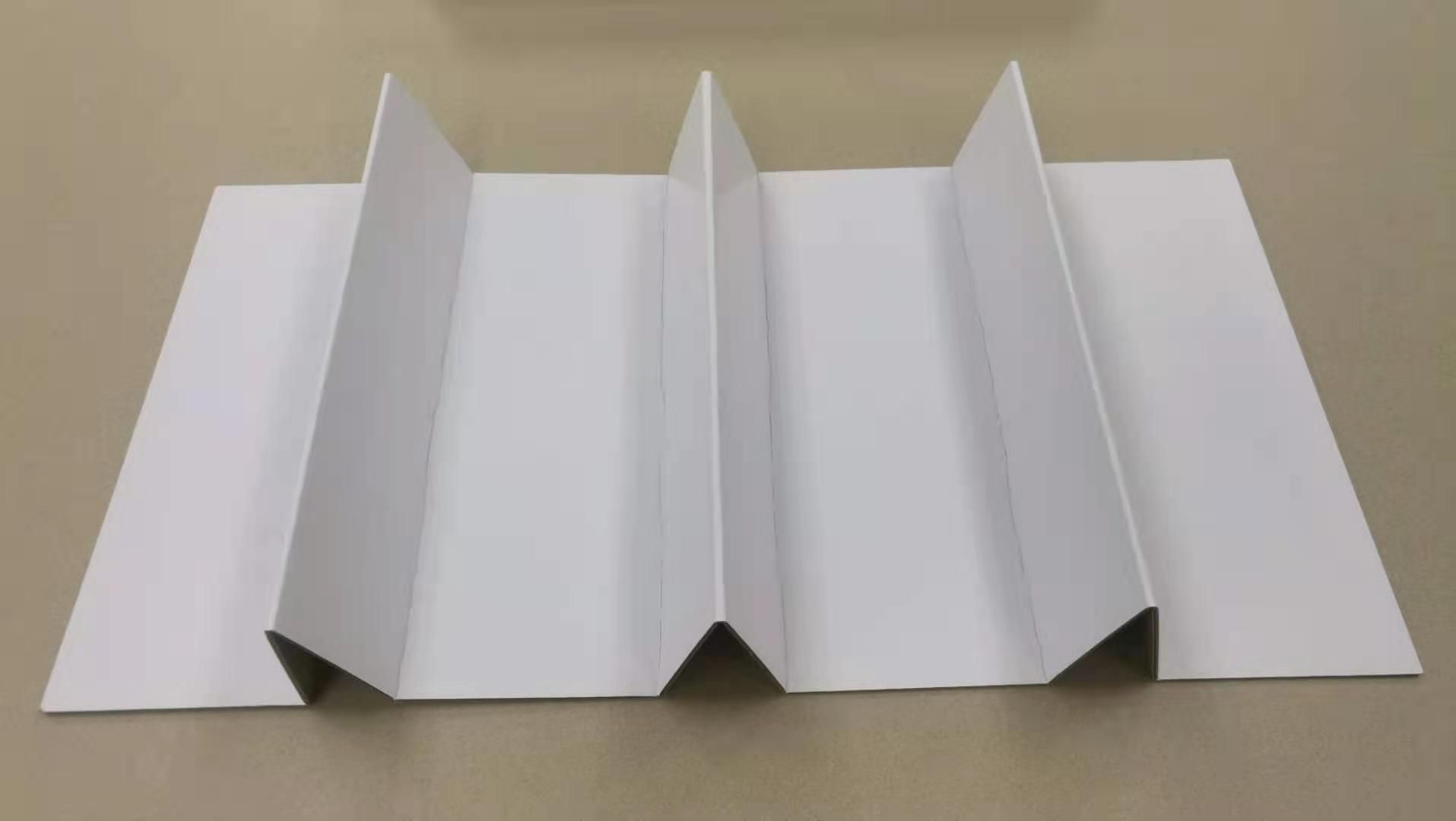
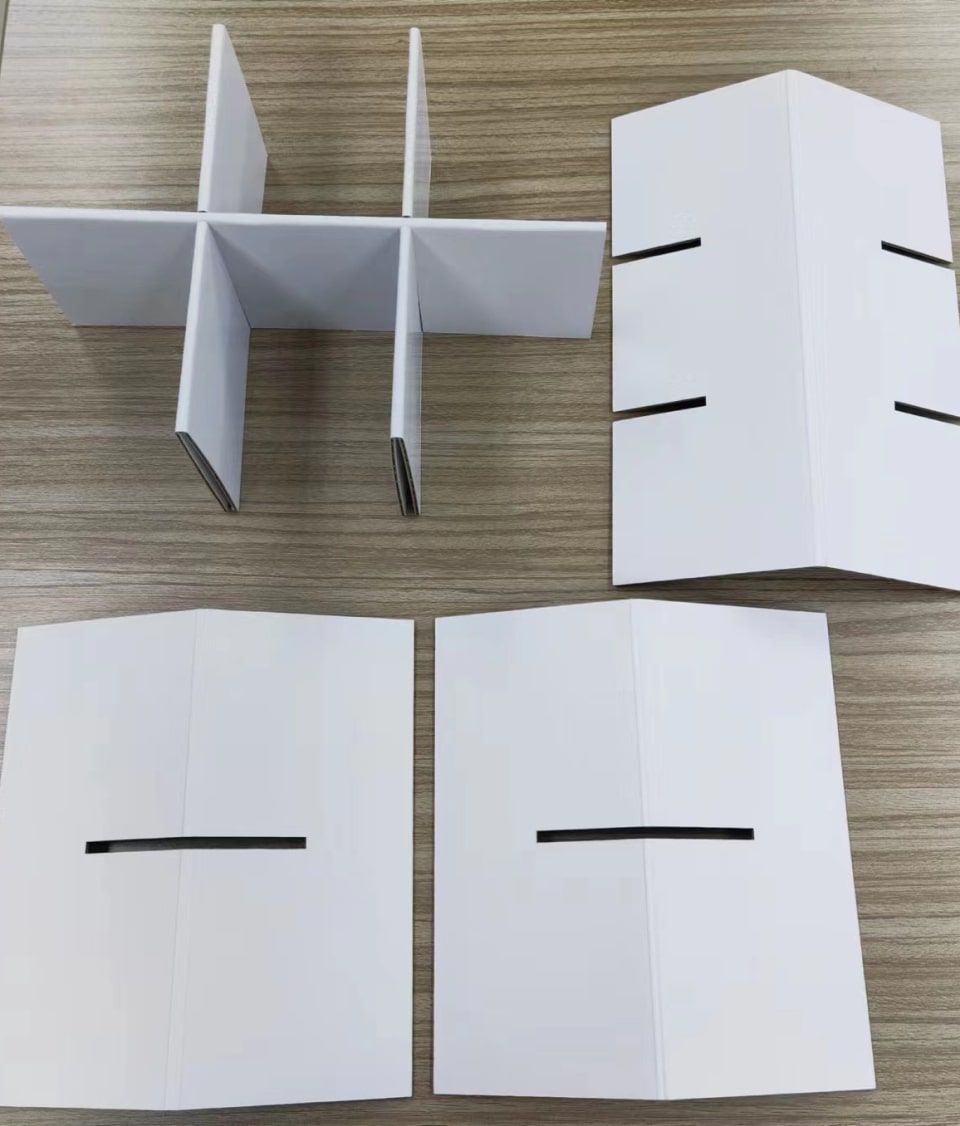
5. Rigid Chipboard
Rigid chipboard partitions are made from single layer chipboard with a strong and rigid structure, which can range from 800-2000gsm in thickness.
Pros:
- Provides rigid protection for delicate items.
- Visually appealing and will take up less space than corrugated materials.
Cons:
- Has the highest cost compared to other partition types.
They are best for those looking for a high-end and luxurious feel for their partition, often matching the material of rigid boxes.
